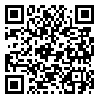Volume 11, Issue 4 (12-2008)
J Arak Uni Med Sci 2008, 11(4): 77-85 |
Back to browse issues page
Download citation:
BibTeX | RIS | EndNote | Medlars | ProCite | Reference Manager | RefWorks
Send citation to:



BibTeX | RIS | EndNote | Medlars | ProCite | Reference Manager | RefWorks
Send citation to:
Salami M, Hamidi G A, Aghanouri Z, Dadkhah M. Light deprivation-related defect in spatial navigation of water maze. J Arak Uni Med Sci 2008; 11 (4) :77-85
URL: http://jams.arakmu.ac.ir/article-1-289-en.html
URL: http://jams.arakmu.ac.ir/article-1-289-en.html
1- , salami-m@kaums.ac.ir
Abstract: (17621 Views)
Background: Sensory signals and intrinsic activity of the neuronal circuits deeply influence on developing the sensory systems in early life. Light deprivation of animals is known as an established method in assessment of environmental signals in development of the nervous system. Methods and Materials: In this experimental study eighteen male rats at 75 days of postnatal age were used. The animals were divided in two groups, one reared in a cycle of 12light/12dark (light reared-LR) and the other keep in darkness since birth through experiment (Light deprived- LD). The animals were trained in a Morris water maze for spatial memory. They must navigate the maze until finding a platform hidden 1 cm below of water. Then, the time required and the distance spent to find the platform were measured for assessment of the animal behavior. Each animal was given 4 trials/day and the experiment lasted for 6 days. This stage was followed by probe and postprobe tests to evaluate how the learning is consolidated. Results: The results indicated that, compared to their LD counterparts, the LR group was superior in finding the platform where they required a noticeable shorter time to hit the platform(p<0.009). Also, animals in the LR group steered a shorter distance to find the target than did the LD animals(p<0.034). While the two groups elicited a considerable difference during the first half of the experiment both LR and LD rats demonstrated a similar behavior over the second half of the study. Conclusion: The light deprivation negatively influences the spatial navigation in water maze so that the visually deprived rats show less ability in searching the maze based on the spatial cues.
Subject:
General
Received: 2009/04/16
Received: 2009/04/16
Send email to the article author
| Rights and permissions | |
 |
This work is licensed under a Creative Commons Attribution-NonCommercial 4.0 International License. |





